3/2003
Classs 680 Pendolino Becomes ČD's First High-Speed Train
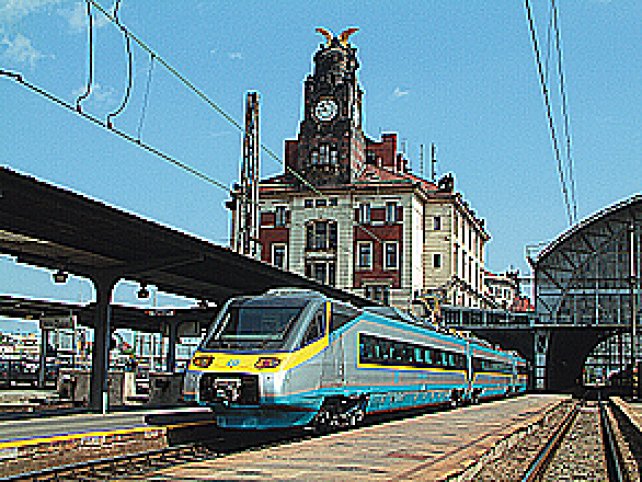
The pride of the Czech Railways passenger fleet, the Class 680 Pendolino, has finally made its debut on ČD metals. The Czech Republic has had to endure a long wait to welcome its first high-speed train, whose journey, both through the design and manufacturing stage, and also en route from Italy to its new home, has not been exactly trouble-free...
The Class 680 Pendolino - Czech Railways' new flagship - during the official presentation at Praha hlavní nádraží on 24 June 2003, under the imposing winged clock tower, which is probably one of the most well-known landmarks on the entire Czech rail network.
Photo: Martin Boháč
Siemens Kolejová Vozidla At Praha-Zličín: An Overview Of Progress
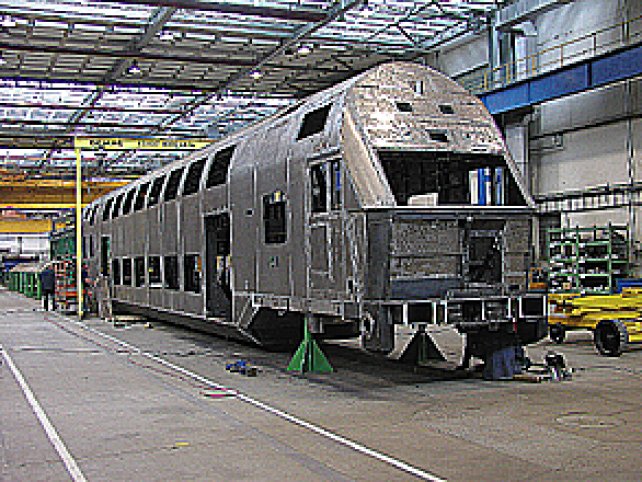
In February 2002 Siemens AG acquired selected assets from ČKD DS and transferred them to a 100%-owned subsidiary known as Siemens Kolejová vozidla (SKV), which is part of the Siemens Transportations Systems (TS) division of the company. A number of changes have occurred at Zličín over the eighteen months following the take-over, and the works' order books are now steadily filling. Since no other specialised transport technology journal has yet featured this new Siemens-owned company, we have decided to offer our readers the following overview of its activities.
At present the largest single SKV order consists of bodyshells for double-deck driving trailers, for ÖBB. We see here the first semi-complete bodyshell on 14 May 2003.
Photo: SKV
News From Stadler
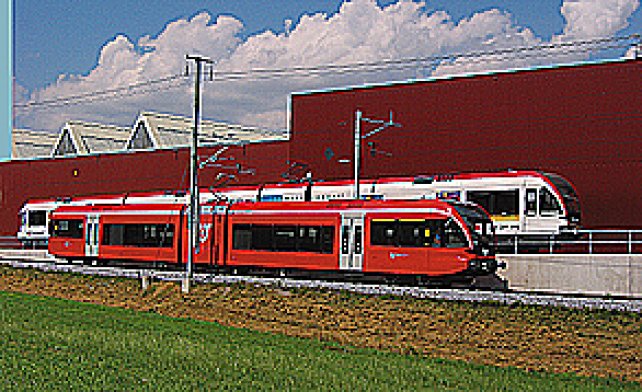
In Railvolution 1/03 we offered readers an overview of Stadler's production activities at the start of 2003. These were focused especially on the manufacture of GTW electric and diesel units. The article in R 3/03 brings the story up to date, reporting on activities at both the Bussnang and the Altenrhein plants in late July 2003. In a separate article, current progress of realizing the order of 6 three-section GTW 2/6 and 7 four-section GTW 2/8 units for Regionalverkehr Mittelland is described.
Running trials on SBB track, RM's GTW 2/6 EMU (526 260) passes an extended version of the same type of unit, SBB 520 006, destined for Seetal, standing on Stadler's own test track.
Photo: Sven Klein
Closures Prompt Slovakian Open Access Acceleration
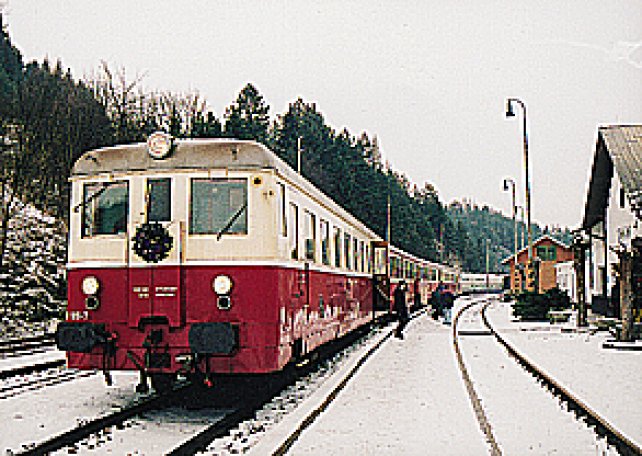
The early part of 2003 saw many secondary railways in central Europe threatened with the loss of their passenger services as state operators, handicapped by limited budgets and diminishing subsidy levels, strove to cut spiralling costs. Attention was first focused on Poland, where threats of a savage reduction of over 1,550 services by PKP Przewozy Regionalne in mid March was later tempered to around 300 withdrawals (and relatively few actual line closures) in mid-July, thanks to a public outcry and threats of strike action by the unions. In this article, however, in R 3/03 we focus on Slovakia, where ZSSK is faced with the same problem as other former eastern bloc rail operators when it comes to unremunerative services of a local/regional nature.
The final day of passenger services was a very sad occasion on many of the affected routes. In this view 830.189, carrying a funeral wreath, and 830.194 on tail, call at Lietavská Lúčka forming the Os 3810 local service from Žilina to Rajec.
Photo: Pavel Venzara
G 2000 BB Conquers Italy
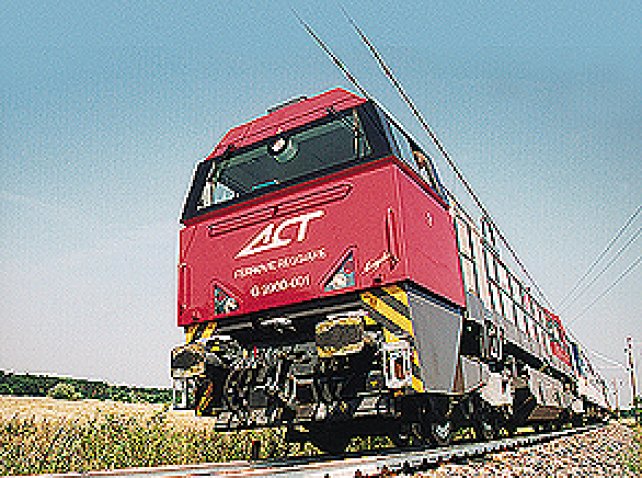
In spite of their strangely-shaped asymmetric cabs, Vossloh's G 2000 BB locomotives are becoming a firm favourite among open access freight operators in Germany, and are now set to establish a footing on networks beyond the borders of the country as well.
The first G 2000 BB for the Italian market, G 2000-001 (works no. 1001045) for ACT Reggio Emilia, left the Vossloh factory at Kiel early in June 2003, bound for the Czech test circuit at Velim.
Here we see ACT G 2000-001 on 24 July 2003 on the larger of the test circuits at Velim.
Photo: Petr Kadeřávek
Wagon Manufacture Ceases At Studénka
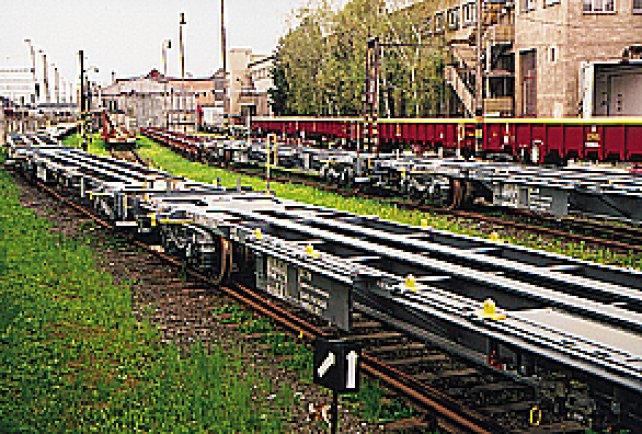
Following a decision by Thrall Vagonka Studénka (TVS) to bring to an end the construction of rail freight wagons here, during the course of 2003 the wagon works at Studénka will, after more than a century, disappear from the list of Czech suppliers of railway vehicles. The last batch of wagons was completed in late June 2003, and by the end of the year 450 members of the 820-strong workforce will have been laid off. For the immediate future the only activity to remain based at Studénka is a small steel mill (Metal plant), employing 370 people.
The departure sidings at TVS on 29 April 2003. Next to the MOA gondolas for EWS are 72-foot Sggnss container wagons for the French company Novatrans.
Photo: Tomáš Kuchta
Trams On Tyres
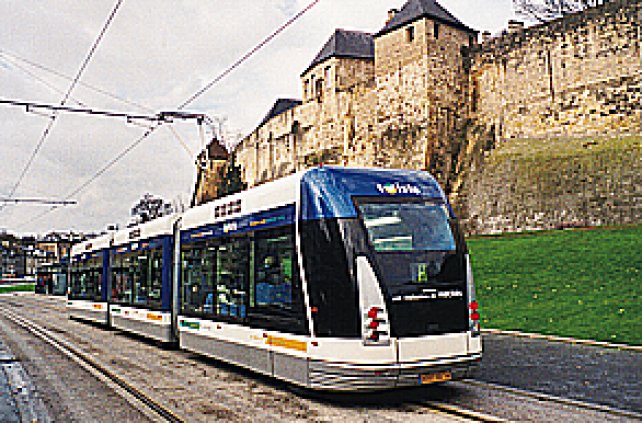
Over the past few years, a new type of public transport vehicle has made its debut on the streets of a couple of French cities - “le Tramway-sur-Pneu”, or rubber-tyred tram. As in the case of so many other technological innovations, it has experienced teething troubles. In the article we explore the development of these hybrid vehicles, and the problems which have accompanied it. During the late 1980s three systems of guided operation for rubber-tyred road vehicles were developed.
A rear view of a TVR passing by the chateau in Caen.
Photo: Gerard Lecleire
And much more!
Cover of 3/2003
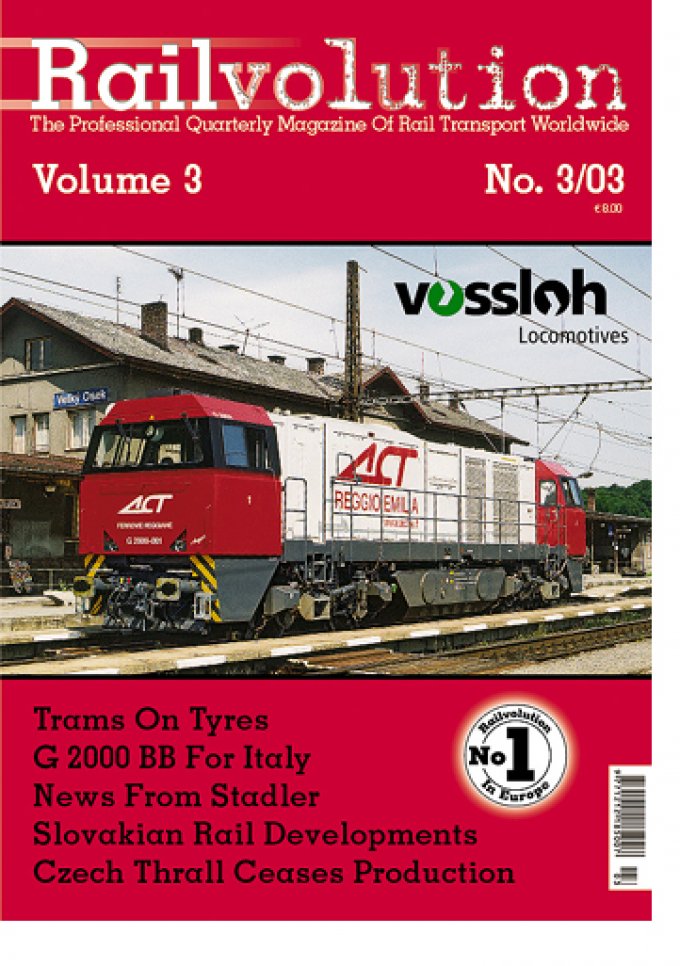
Poster
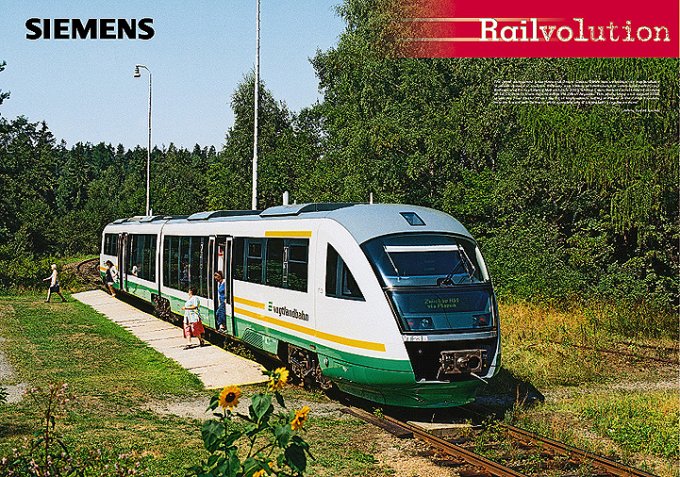
Features: Plakat R 3/03
